Canadian Lynx Facts
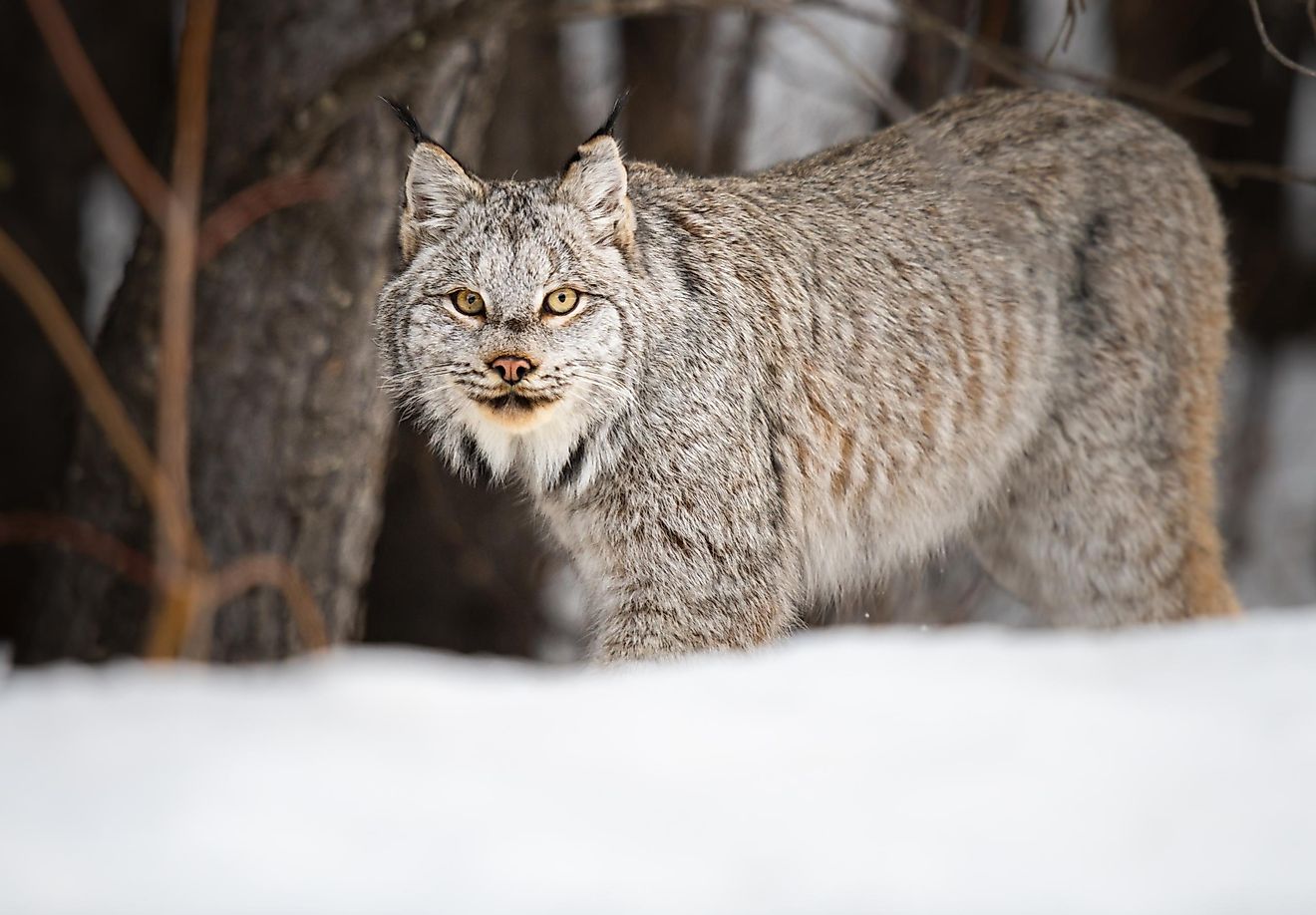
- Canadian lynxes are mostly found in Canada but also in North Central US and Alaska.
- Their primary food source is the arctic hare, but they also eat other rodents and birds.
- The Canadian lynx is a nocturnal animal and a solitary hunter.
Physical Description
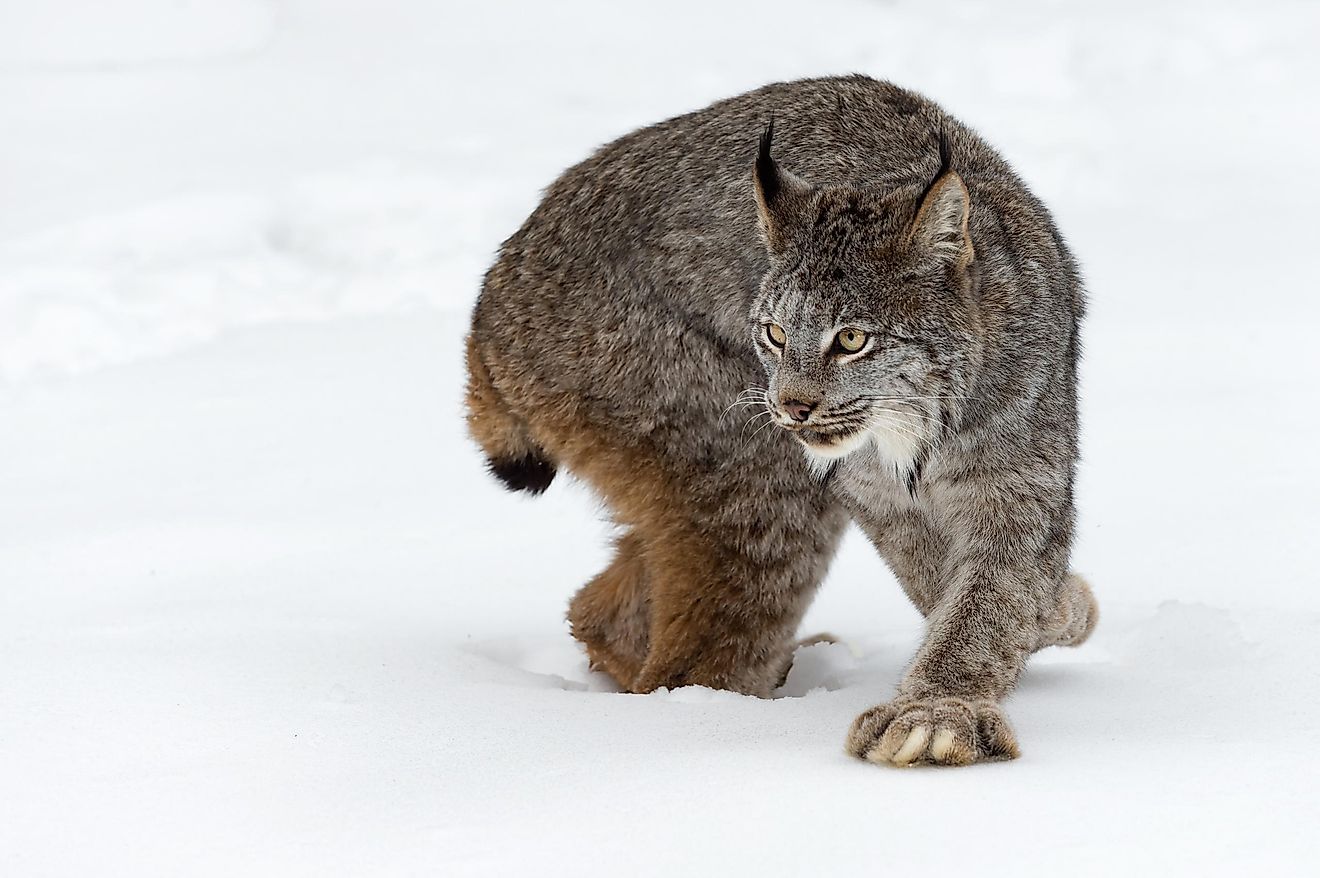
Canada is known for its large deer, ferocious bears, and a variety of avian species. Still, one of its greatest treasures is the Canadian lynx, is a unique and beautiful feline. The Canadian lynx is a medium-sized cat belonging to the family Felidae. It is recognizable by its long ear tufts that flare up into points, thick grey coat, and its short bobbed tail similar to that of a bobcat, although the two are not to be confused. The Canadian Lynx is a more dangerous predator and is somewhat larger than the Bobcat. Standing between 48 to 56 cm tall at the shoulder, spanning 76 to 110 cm in length, and weighing in at 8 to 11 kg, it is one of the largest cats to range through the Canadian North and parts of the United States of America.
Diet
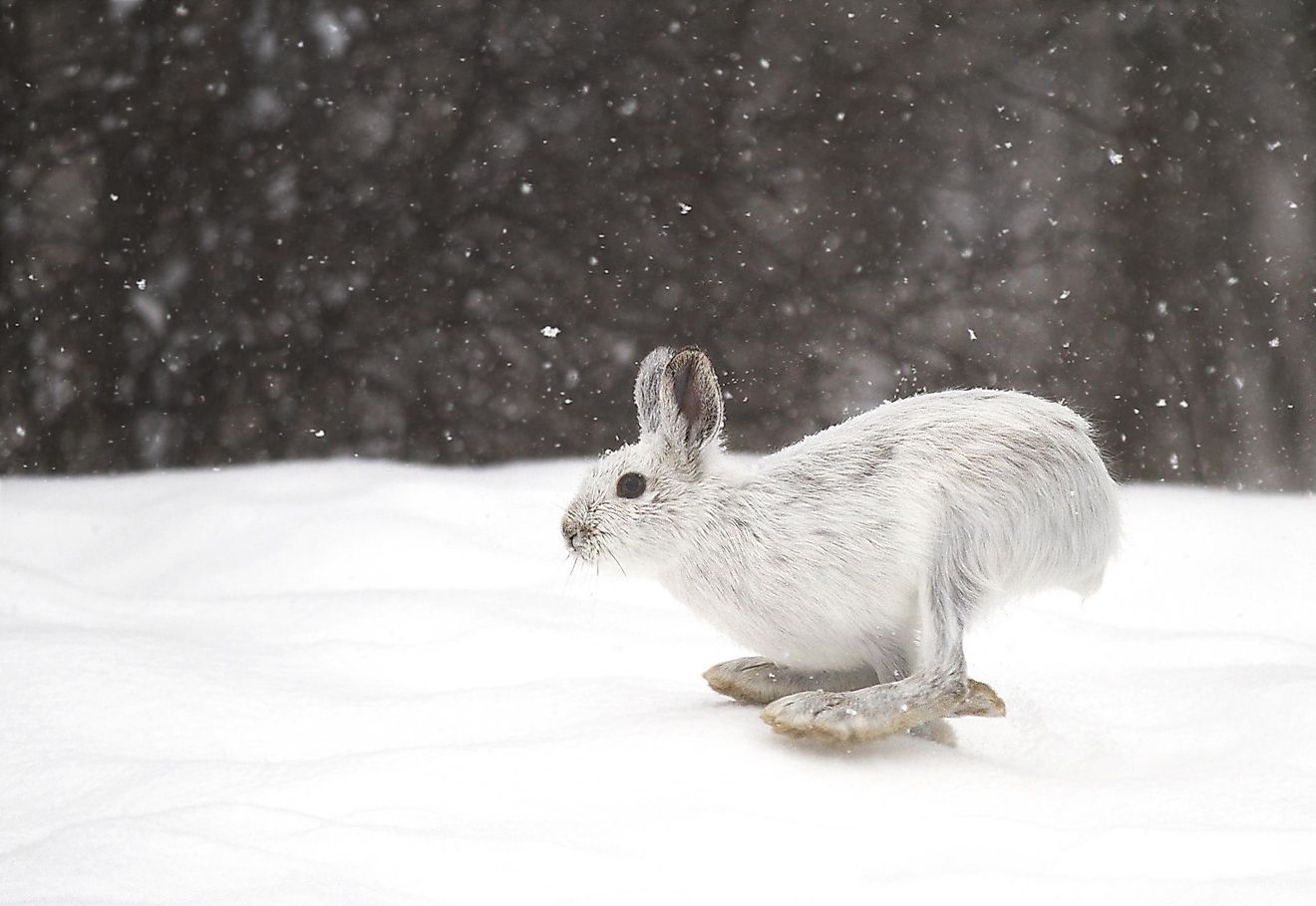
As they are spread throughout a relatively large portion of North America, the Canadian lynx's diet changes according to location. The main diet of lynxes in Canada and Alaska consists of the snowshoe hare, which is found in much larger numbers throughout these northern climates. Lynxes living further south will hunt mice, voles, grouses, red squirrels, and ptarmigans and other small birds. The Canadian lynx is a solitary animal and hunts alone by stalking its prey. Their usual snowshoe hare diet means they must be agile and fast hunters in order to kill their evasive, protein-rich prey.
Habitat And Range
Where their prey goes, the lynx follows, and as such most Canadian lynxes are distributed where the snowshoe hare can be found. These areas are commonly found in dense boreal forests, as well as in open forests and on rocky mountainsides. Although lynxes can be found in the North-Central US and Alaska, about 95% of the Canadian lynx population is found in Canada, where they are an indigenous species. Their thick coats allow them to deal with the cold winter temperatures there, and their wide-spread paws make it easier for walking across the snow without sinking. According to the Internation Union for the Conservation of Nature's Red List of Threatened Species, the Canadian lynx is classified as a species of "Least Concern," though its population is threatened in certain regions, especially in the United States.
Behavior
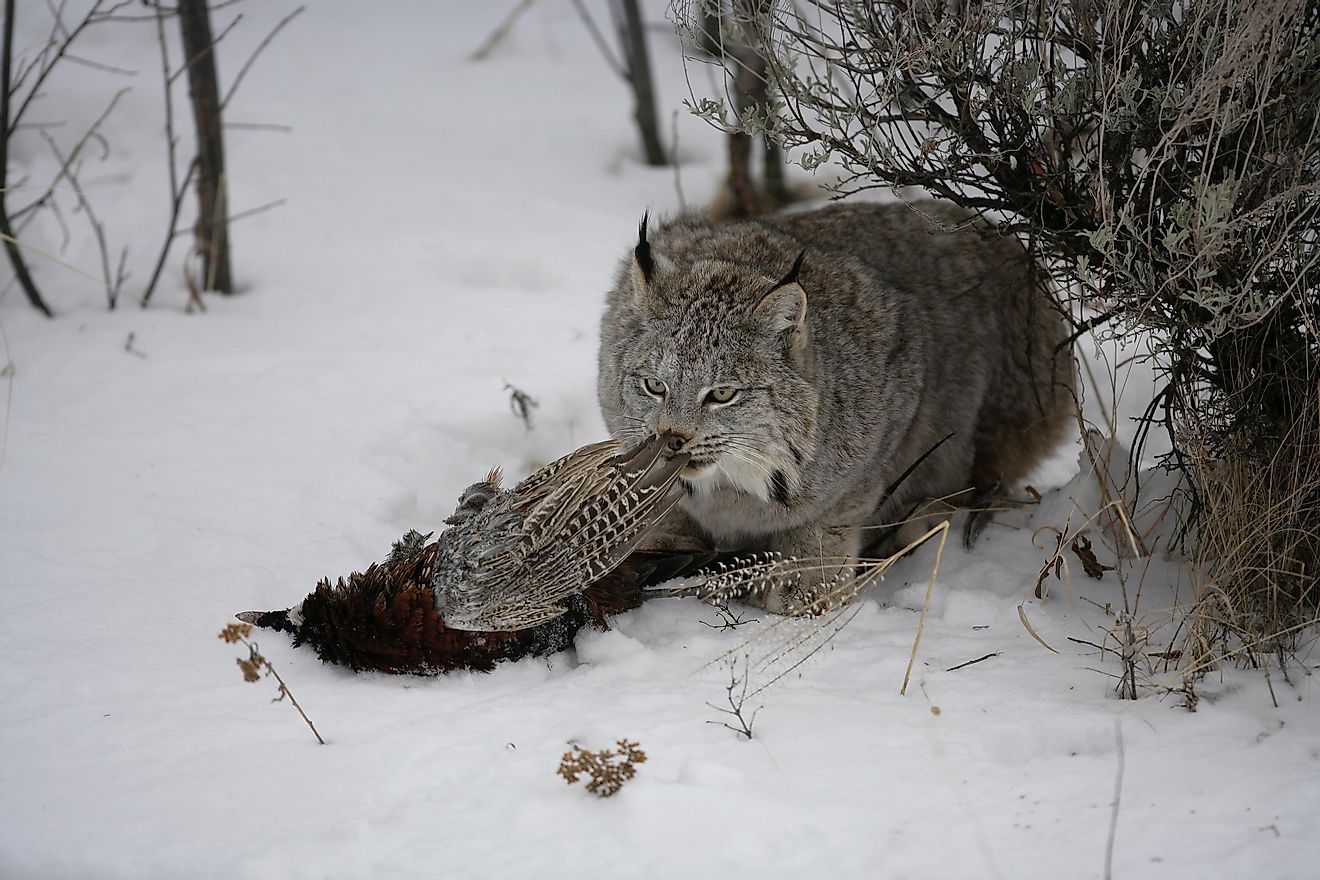
The Canadian lynx is a nocturnal hunter, and their big eyes and exceptional hearing help this predator to catch its prey. Although they are fast enough to outrun a small rabbit, they are not known for their speed. Instead, the Canadian lynx is a sneaky hunter that covertly stalks its prey for up to several hours. Common enemies to the Canadian lynx include mountain lions, wolves, and coyotes. At times, lynxes and other predatory animals will fight if they come into contact with one another, which often doesn’t end well for the Canadian lynx who is often the smaller of the two mammals in question. Hunters also pose a threat to lynxes, as their beautiful furs are hunted to be made into top dollar pelts in the fashion industry.
Reproduction
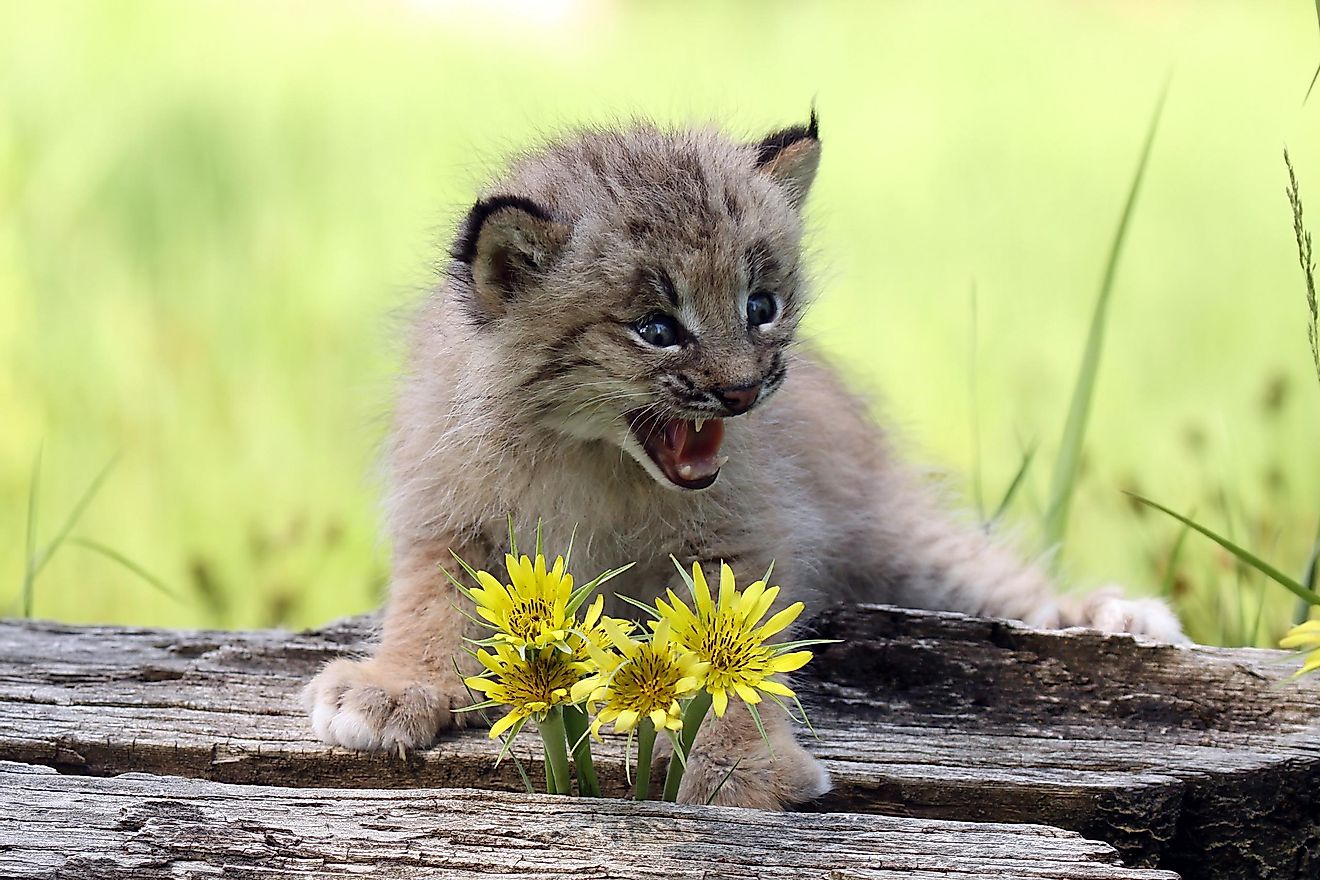
During the later winter months, mating season commences for many wild animals, and that of the Canadian lynx begins upon the return of warm weather. Breeding lasts only a short period of time for the Canadian lynx, roughly spanning the month of April across most parts of their range. Once pregnant, female Canadian lynxes will produce litters between one to eight kittens in size after being pregnant for 63 to 70 days. After 10 to 17 days from birth, the kittens will finally open their eyes, and they will begin walking at 24 to 30 days. By five months old, they are weaned off of their mothers' milk and begin eating solid meat to meet their energy needs. After this time, it takes around 23 months for lynxes to fully mature into adults.







